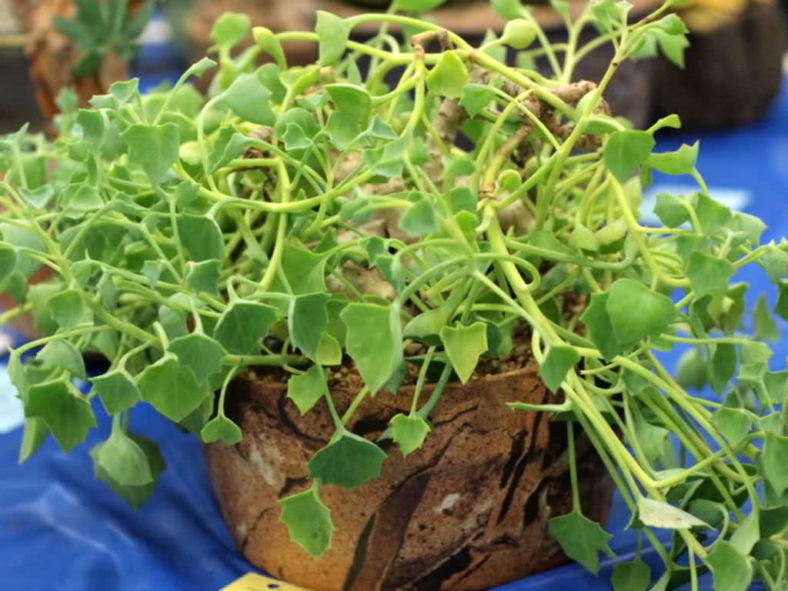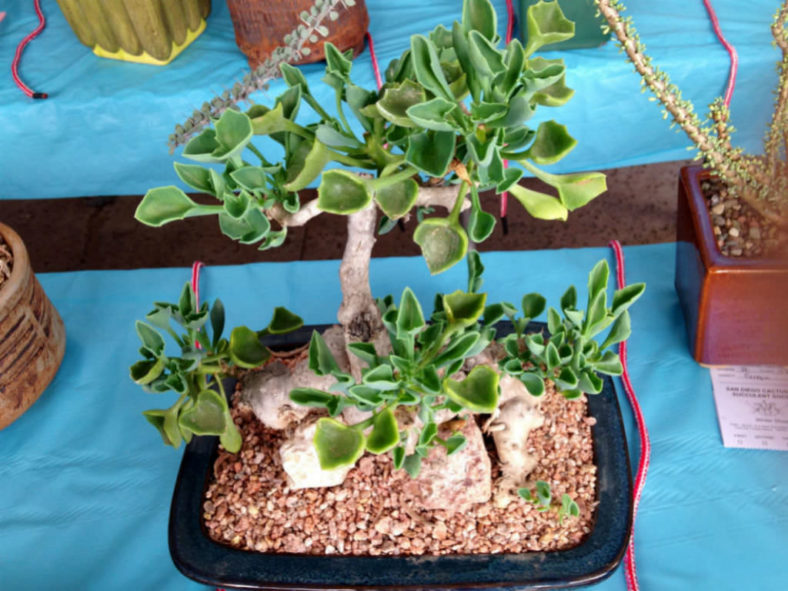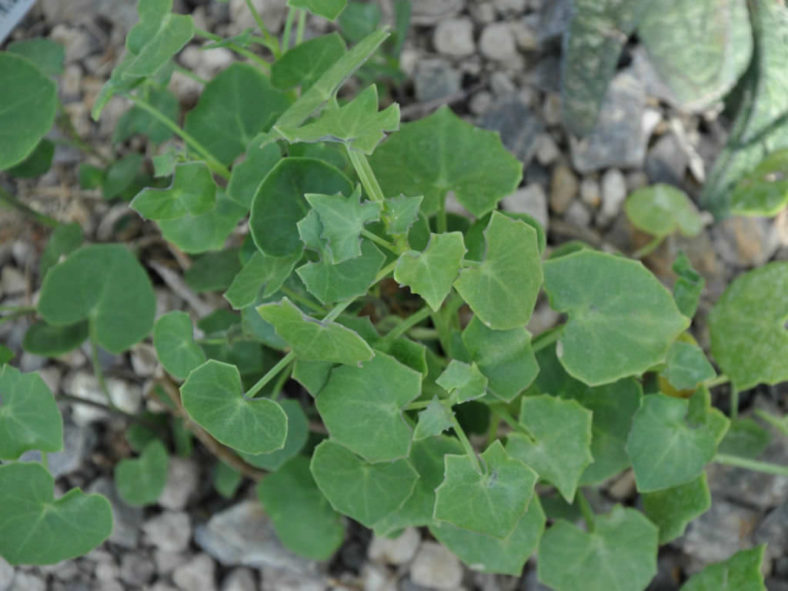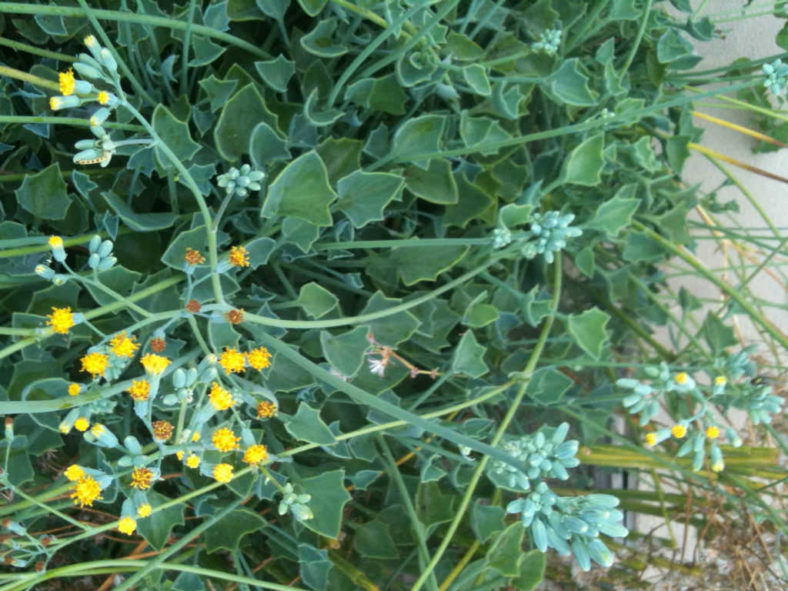Senecio oxyriifolius subsp. tropaeolifolius is recognized as a subspecies of Senecio oxyriifolius. However, recent studies show that, although closely related and often confused, they are distinct enough to be treated as separate species. This plant may be one of the parents of Senecio kleiniiformis, a widely cultivated ornamental of uncertain hybrid origin.
Scuentifi Name
Senecio oxyriifolius subsp. tropaeolifolius (MacOwan ex F.Muell.) G.D.Rowley
Common Name(s)
False Nasturtium, Nasturtium-leaf Spear Head
Synonym(s)
Senecio tropaeolifolius
Scientific Classification
Family: Asteraceae
Subfamily: Asteroideae
Tribe: Senecioneae
Subtribe: Senecioninae
Genus: Senecio
Etymology
The subspecific epithet "tropaeolifolius" (pronounced "tro-pee-oh-lih-FOH-lee-us") means "having leaves like those of Tropaeolum". It refers to the leaves of this subspecies, which resemble those of plants in the genus Tropaeolum.
Origin
Senecio oxyriifolius subsp. tropaeolifolius is native to South Africa (Northern Cape, Western Cape, and Eastern Cape).
Description
Senecio oxyriifolius subsp. tropaeolifolius, also known as Senecio tropaeolifolius, is a small succulent that quickly forms a caudex that sprouts vine-like stems bearing interesting pentagonal leaves with sharp corners. It can grow up to 8 inches (20 cm) tall and 24 inches (60 cm) wide, forming a dense clump over time.
From fall to winter, the mature plants are topped with terminal clusters of bright yellow, daisy-like flowers on lax spikes that can reach up to 2 inches (5 cm) in length.

How to Grow and Care for Senecio oxyriifolius subsp. tropaeolifolius
Hardiness: USDA hardiness zones 9b to 11b: from 25°F (-3.9°C) to 50°F (10°C).
Established Senecios are extremely drought-tolerant. They need some water during the summer, but do not leave the soil wet for prolonged periods. Allow the soil to dry out between waterings in winter when they are somewhat dormant. Since they are growing in sandy soil, they need nutrients replenished. Fertilize annually, but lightly. Too much fertilizer can cause excessive leggy growth.
Taller varieties can get floppy. You can prune them back to where the stem is firm in early spring. You can even root the cuttings.
Plants can be divided or repotted in early spring. If you are growing them in containers, they enjoy spending the summer outdoors. Wait until there is no danger of frost and move them back indoors in the fall.
Senecio can be grown from either seed or cuttings. Seeds prefer warm temperatures and constant moisture to germinate. Cuttings are easier and faster. Cut during the growing season, from early spring to fall. Root them in sandy soil, in containers.
Learn more at How to Grow and Care for Senecio.
Links
- Back to genus Senecio
- Succupedia: Browse succulents by Scientific Name, Common Name, Genus, Family, USDA Hardiness Zone, Origin, or cacti by Genus
Photo Gallery
Click on a photo to see a larger version.


